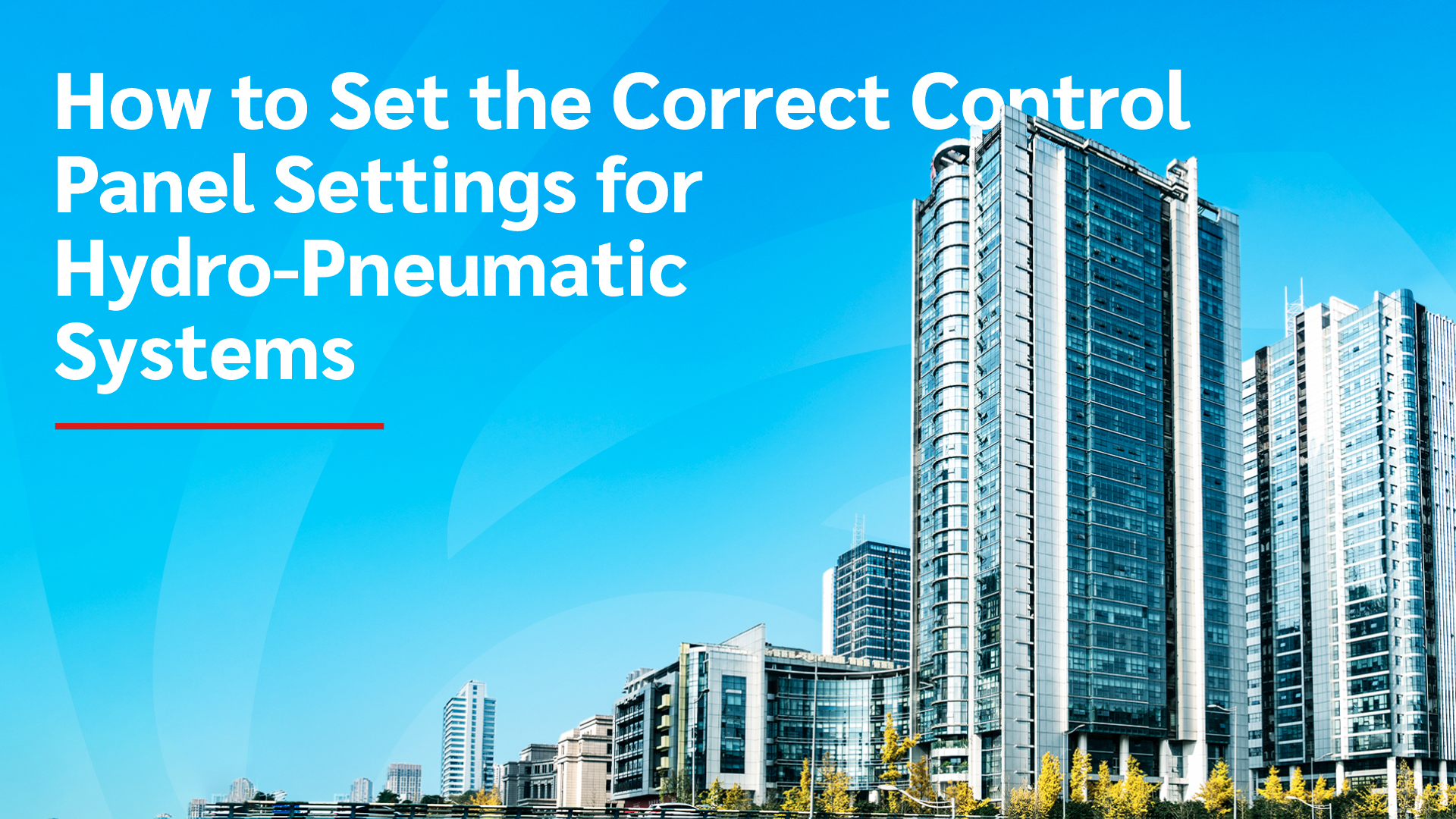
How to Set the Correct Control Panel Settings for Hydro-Pneumatic Systems
29-04-2024
Hydro-pneumatic systems play a pivotal role in water distribution, providing pressurised water supply for various applications in residential, commercial, and industrial settings. Central to the efficient operation of these systems is the control panel, which regulates pump performance,monitors system parameters, and ensures optimal functionality. In this comprehensive guide,
we'll explore the key considerations for setting the correct control panel settings for hydro-pneumatic systems, empowering you to maximise performance, efficiency, and reliability.
Understanding Hydro-Pneumatic Systems:
Before delving into control panel settings, let's briefly review Hydro-Pneumatic Systems. These systems consist of a pressure tank, a pumpset and a control panel. The pump draws water from the source, such as a well or municipal supply, and fills the pressure tank.
When water demand increases, the pump is activated to maintain the desired pressure in the system, ensuring consistent water supply to end-users.
1) Key Components of a Control Panel
A typical control panel for a hydro-pneumatic system comprises several essential components:
Pressure Switch:Monitors system pressure and activates the pump when pressure drops
below a predetermined setpoint.
Pressure Gauge: Provides visual indication of system pressure, allowing operators to
monitor performance.
Motor Starter: Controls the operation of the pump motor, allowing for manual or
automatic start/stop functionality.
Pressure Relief Valve: Prevents over-pressurization of the system by releasing excess
pressure when necessary.
Control Panel Display: Displays system status, alarms, and diagnostic information for
easy monitoring and troubleshooting.
Setting the Correct Control Panel Settings:
Achieving optimal performance in a hydro-pneumatic system requires careful adjustment of control panel settings. Here are the key considerations:
- Pressure Setpoint: Determine the desired pressure setpoint for the system based on the requirements of the application. This setpoint should balance the need for adequate pressure with energy efficiency and pump longevity.
- Pressure Differential: Set the pressure differential, also known as the cut-in and cut-out pressure, to define the operating range of the pressure switch. This range should be carefully calibrated to avoid excessive cycling of the pump while ensuring sufficient pressure for water delivery.
- Start/Stop Pressure: Adjust the start and stop pressures to control when the pump activates and deactivates in response to changes in system pressure. These settings should be optimised to minimise unnecessary pump cycling and maintain stable pressure levels.
- Alarm Thresholds: Configure alarm thresholds for system parameters such as low pressure, high pressure, and motor overload. These thresholds should trigger visual or audible alarms to alert operators of potential issues requiring attention.
- Motor Protection:Implement motor protection features in the control panel to safeguard the pump motor from damage due to overload, overheating, or voltage fluctuations. This may include thermal overload relays, phase loss protection, and voltage monitoring.
Regular Monitoring and Adjustment:
- Once the control panel settings are configured, it’s essential to monitor system performance regularly and make adjustments as needed. Factors such as changes in water demand, fluctuations in source water pressure, and equipment wear can impact system operation over time.
- By proactively monitoring system parameters and fine-tuning control panel settings, operators can ensure optimal performance and longevity of the hydro-pneumatic system.
2) Implementing Remote Monitoring and Control:
Installation and: Remote monitoring and control capabilities are increasingly valuable for optimising the performance and efficiency of hydro-pneumatic systems. By integrating advanced telemetry and communication technologies into the control panel, operators can remotely monitor system parameters, diagnose issues, and adjust settings in real-time from anywhere with an internet connection.
Here’s how remote monitoring and control can enhance the functionality of hydro-pneumatic systems:
Real-Time Data Acquisition:
- Remote monitoring systems collect and transmit real-time data from sensors installed throughout the system, including pressure, flow rate, and temperature. This data provides operators with valuable insights into system performance, allowing them to identify trends, detect anomalies, and diagnose potential issues promptly.
Predictive Maintenance:
- By analysing historical data and trends, remote monitoring systems can predict when equipment components are likely to fail or require maintenance. This proactive approach to maintenance helps minimise downtime, reduce repair costs, and extend the lifespan of critical system components.
3) Maintenance and Troubleshooting Strategies:
Fault Diagnosis and Troubleshooting:
Remote monitoring systems can automatically detect and diagnose faults within the hydro-pneumatic system, such as pump malfunctions, pressure fluctuations, or sensor failures. Operators receive real-time alerts and notifications, enabling them to take immediate corrective action and prevent further damage.
Energy Optimization:
- Remote control capabilities allow operators to adjust system settings remotely to optimise energy consumption based on fluctuating demand and operating conditions.
- By reducing unnecessary pump cycling and adjusting pressure setpoints dynamically, operators can minimize energy waste and lower operational costs.
Enhanced Security and Compliance:
- Remote monitoring systems provide secure access controls and data encryption to protect sensitive information and ensure compliance with regulatory requirements.
- Access to system controls and data is restricted to authorised personnel, reducing the risk of unauthorised access or tampering.
AQUA GROUP’s Expertise in Hydro-Pneumatic Systems

Elevating Efficiency and Reliability with AQUA GROUP
As a leading provider of water management solutions, AQUA GROUP offers a comprehensive range of Hydro-Pneumatic Systems tailored to meet the diverse needs of residential, commercial, and industrial applications. Our expert engineers work closely with clients to design and install custom hydro-pneumatic systems optimised for performance, efficiency, and reliability. With our innovative control panel solutions and unmatched technical support, AQUA GROUP is your trusted partner for maximising the effectiveness of your water distribution infrastructure.
In conclusion, setting the correct control panel settings is essential for optimising the performance, efficiency, and reliability of hydro-pneumatic systems. By carefully adjusting pressure setpoints, differential pressures, start/stop pressures, and alarm thresholds, operators can ensure smooth operation and consistent water supply. With AQUA GROUP’s expertise and innovative solutions, you can confidently navigate the complexities of control panel configuration and achieve optimal results in your water distribution system. Visit our Hydro-Pneumatic Systems page to learn more about our offerings and partner with us for your water management needs.
